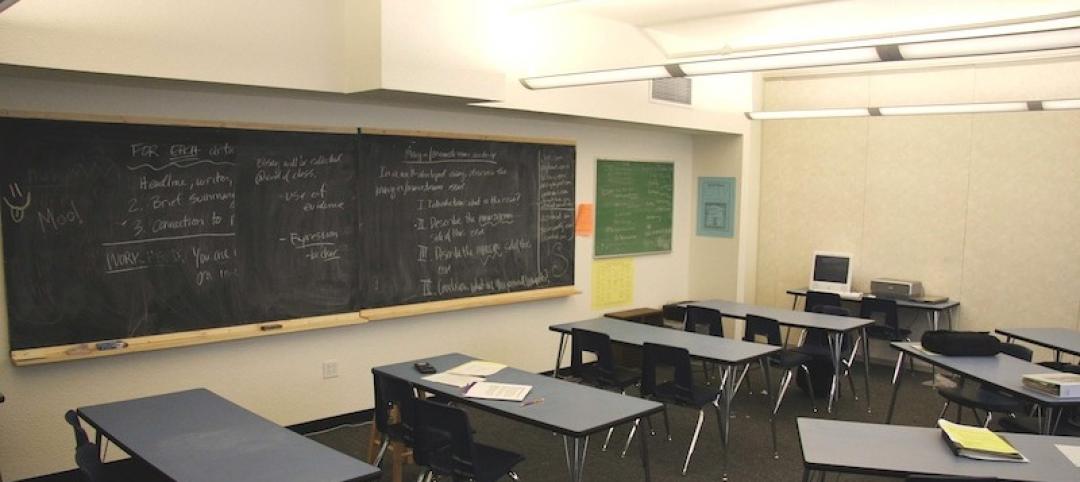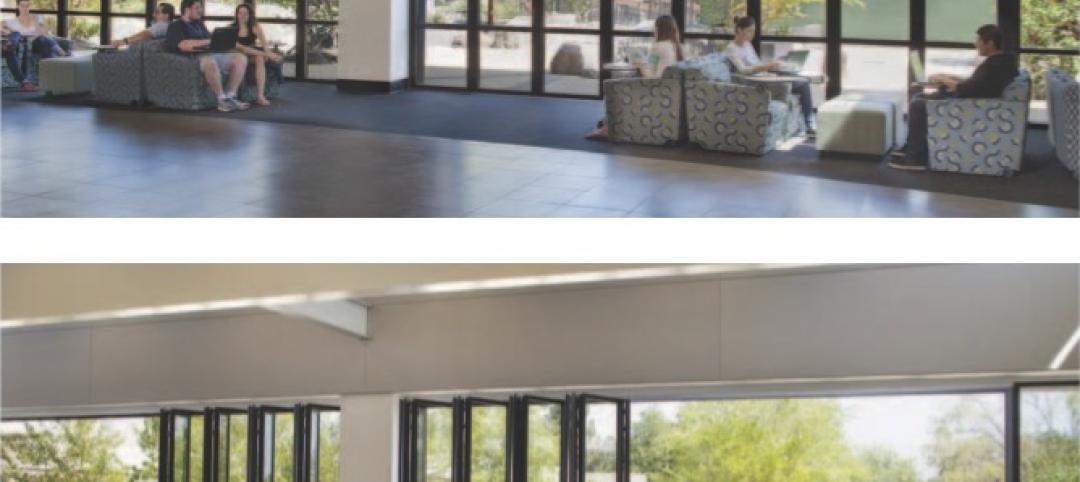The Enterprise Rose Architectural Fellowship and architect Lawrence Scarpa, FAIA, have been selected as the 2017 recipients of the Collaborative Achievement Award, which recognizes and encourages distinguished achievements of allied professionals, clients, organizations, architect teams, knowledge communities, and others who have had a beneficial influence on or advanced the architectural profession. The recipients will be honored at the AIA Conference on Architecture 2017 in Orlando.
Enterprise Rose Architectural Fellowship
Launched in 2000 by affordable housing and community development organization Enterprise Community Partners, The Enterprise Rose Architectural Fellowship is recognized for cultivating a generation of architects committed to bringing the economic, health and education benefits of quality design to low-income communities. Enterprise believes architects are a critical part of the solution to end the growing housing insecurity crisis in the U.S. which forces more than one in four renters to pay at least 50 percent of their income on their home, risking their health, education and economic mobility.
Founded with a mission to integrate ideals of design excellence within organizations that work with underserved communities, the fellowship has paired its fellows with over 75 organizations serving diverse geographies and communities. Rose Fellows, represented by the country’s finest early-career architects, are continually engaged in pressing issues and propelling the profession forward. Partnering emerging designers with community developers for three years, the fellowship is the premier career path for young architects to support public interest design. To date, the 69 fellows have created or preserved more than 12,000 affordable homes across the country. Fellows sharpen essential architectural skills while developing financing, policy, community engagement and organizing skills, as part of the fellowship's effort to develop architectural leaders who have the empathy, humility and experience to be effective community advocates.
The impact and success of the Enterprise Rose Architectural Fellowship is felt in its ability to define and influence public policy and the frameworks for the design of buildings and communities.
Lawrence Scarpa, FAIA
A unique mix of design excellence, social responsibility, stewardship, and service to the profession has defined Lawrence Scarpa’s 30-year career in architecture. In 2001 Scarpa and Angela Brooks, FAIA, co-founded Livable Places, a nonprofit policy and development organization that actively promotes affordable and sustainable communities. Comprising a cadre of developers, advocates, architects, and bankers led by Scarpa, Livable Places has played an instrumental role in a number of policy changes in California, setting the stage for transformation of the state’s communities.
In Los Angeles the A+D Architecture and Design Museum, which Scarpa co-founded, has established a keen awareness of architecture and design in the everyday life of its visitors. For the past 15 years the museum’s progressive exhibitions, youth-oriented education programs, and community events have celebrated the built environment and examined the issues surrounding it. The museum annually hosts AIA/LA’s 2x8 symposium and exhibition, which Scarpa organized and developed as a Chapter board member. The program highlights exemplary student work from architecture and design institutions throughout California.
Modeled after the Mayors’ Institute on City Design, the Affordable Housing Design Leadership Institute, an initiative devised by Scarpa and Maurice Cox, FAIA, in 2008, assembles leaders in affordable housing for a two-and-a-half-day seminar focused on innovation and best practices. Now administered by Enterprise Community Partners, where Scarpa is an advisory board member, the institute provides year-round assistance to organizations through the Enterprise Rose Architectural Fellowship program and has enabled 60 nonprofits and community groups throughout the country better their communities. The jury for the 2017 Collaborative Achievement Award includes: Illya Azaroff, AIA, (Chair), +LAB architects; Hans Butzer, AIA, Butzer Architects and Urbanism; Damian Farrell, FAIA, Damian Farrell Design Group; Jared Edgar Mcknight, Assoc. AIA, Wallace Roberts & Todd, LLC and Lynn M. Perkins, AIA, Bill & Melinda Gates Foundation.
Related Stories
| Mar 21, 2013
Are charter schools killing private schools?
A recent post on Atlantic Cities highlights research by the U.S. Census Bureau's Stephanie Ewert that shows a correlation between the growth of charter schools and the decline in private school enrollment.
| Mar 20, 2013
Folding glass walls revitalize student center
Single-glazed storefronts in the student center at California’s West Valley College were replaced with aluminum-framed, thermally broken windows from NanaWall in a bronze finish that emulates the look of the original building.
| Mar 20, 2013
Architecture Billings Index up again in February
The American Institute of Architects reported the February ABI score was 54.9, up slightly from a mark of 54.2 in January. This score reflects a strong increase in demand for design services.
| Mar 18, 2013
Toyo Ito named 2013 Pritzker Architecture Prize recipient
Toyo Ito, a 71 year old architect whose architectural practice is based in Tokyo, Japan, will be the recipient of the 2013 Pritzker Architecture Prize.
| Mar 15, 2013
AIA opposes House bill cutting Eisenhower Memorial funding
AIA opposes House bill cutting Eisenhower Memorial funding.
| Mar 15, 2013
Singapore R&D campus takes top honor in Lab of Year competition
Singapore CREATE R&D campus takes top honor in Lab of Year competition, sponsored by R&D Magazine.
| Mar 15, 2013
7 most endangered buildings in Chicago
The Chicago Preservation Society released its annual list of the buildings at high risk for demolition.
| Mar 14, 2013
How to win more work from community colleges
The nation’s thousand-plus community college districts can be a steady source of income for your Building Team—provided you appreciate the special needs of this important sector of the higher education market.

















